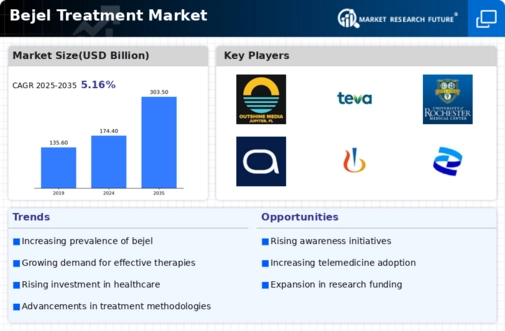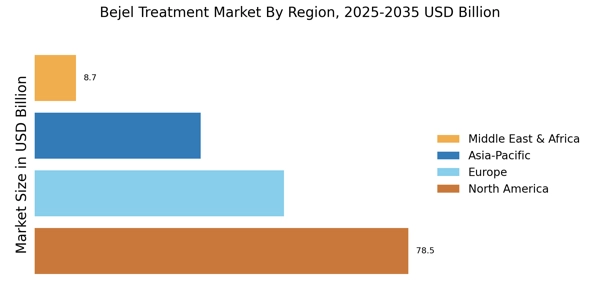The Bejel Treatment Market is witnessing significant dynamics driven by the increasing incidence of bejel, non-venereal syphilis that primarily affects children in certain regions.
The competitive landscape is characterized by the presence of various pharmaceutical companies that focus on developing and distributing effective treatment options.
Factors such as advancements in medical research, rising awareness about the disease, and supportive government initiatives are integral to market growth.
Companies are enhancing their product portfolios and engaging in strategic collaborations to penetrate untapped markets while also investing in R&D for innovative therapies.
The competitive environment is defined by both established players and emerging firms who aim to strengthen their market positions by catering to the specific needs of healthcare providers and patients alike.
Johnson and Johnson has established a formidable presence in the Bejel Treatment Market through its robust pharmaceutical division. The company's strengths lie in its extensive research capabilities and an established reputation for quality.
Johnson and Johnson has made significant investments in clinical studies aimed at understanding the efficacy of its treatments for bejel, positioning it as a trusted name within the medical community.
Their commitment to innovation and patient-centered care has enabled them to maintain a competitive edge, attracting partnerships with healthcare institutions and professionals focused on tackling this disease.
Furthermore, their global distribution network ensures that their products reach a wide range of geographic areas, facilitating quick access to therapy for affected populations.
Teva Pharmaceutical Industries is another key player in the Bejel Treatment Market, recognized for its comprehensive approach to generic and specialty medications.
The company's strengths include a vast portfolio and a strong focus on developing high-quality treatments at competitive prices, making healthcare more accessible for patients suffering from bejel.
Teva's extensive experience in various therapeutic areas allows it to leverage its existing infrastructure and knowledge for the efficient manufacturing and distribution of medications, specifically targeting bejel.
Additionally, Teva's commitment to maintaining high standards in quality control and regulatory compliance positions it favorably among healthcare providers, contributing to better patient outcomes.
The company's proactive strategies in addressing market needs and ensuring the availability of effective treatment options underscore its pivotal role in the fight against this disease.


















Leave a Comment